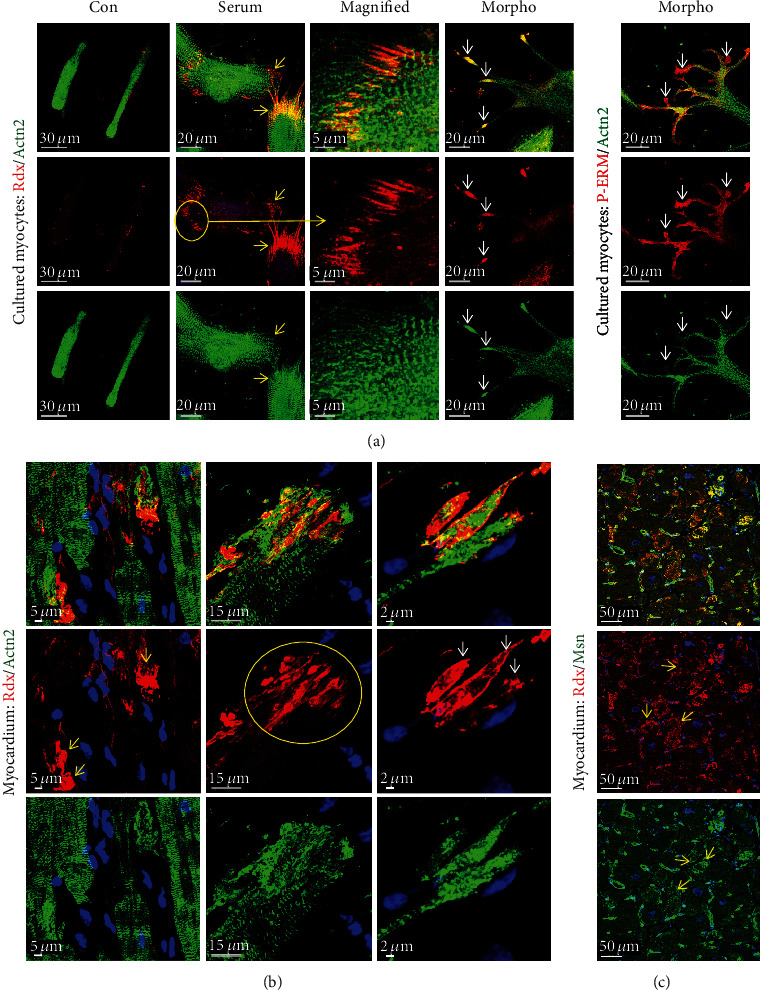Figure 4.

Reorganization of the intercalated disc in cultured adult cardiomyocytes resembles remodeling of ID in patients with DCM. (a) Confocal images of adult cardiomyocytes after different treatments at day 4. In control cultures (Con), radixin (Rdx) is lost at the area of the intercalated disc and cells round up at the ends. Typical cross-striation is lost. After serum stimulation, the shape of IDs appears wider (yellow arrows). Radixin accumulates in a longitudinal configuration paralleling the axis of the cardiomyocyte (yellow circle and long yellow arrow, magnified image). When long thin extensions are formed, knot-like spots at the ends can be observed (Morpho, white arrows). P-ERM indicates activation in these knot-like spots. (b) Similar to cell cultures, cardiomyocytes of the failing heart show various shapes of the ID reflecting probably different stages of remodeling (yellow and white arrows, yellow circle). The area of the ID appears wider (yellow arrows). Radixin accumulates in a longitudinal configuration in cardiomyocytes (yellow circle). Knot-like spots and extensions at the end of cardiomyocytes are clearly visible (white arrows). (c) Radixin (Rdx, red) and moesin (Msn, green) reveal also some diffuse cytoplasmic as well as membranous localization (yellow arrows).
